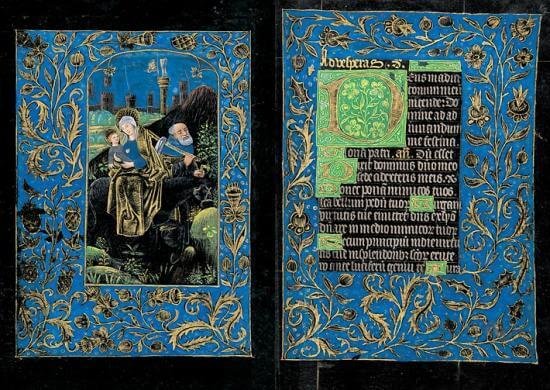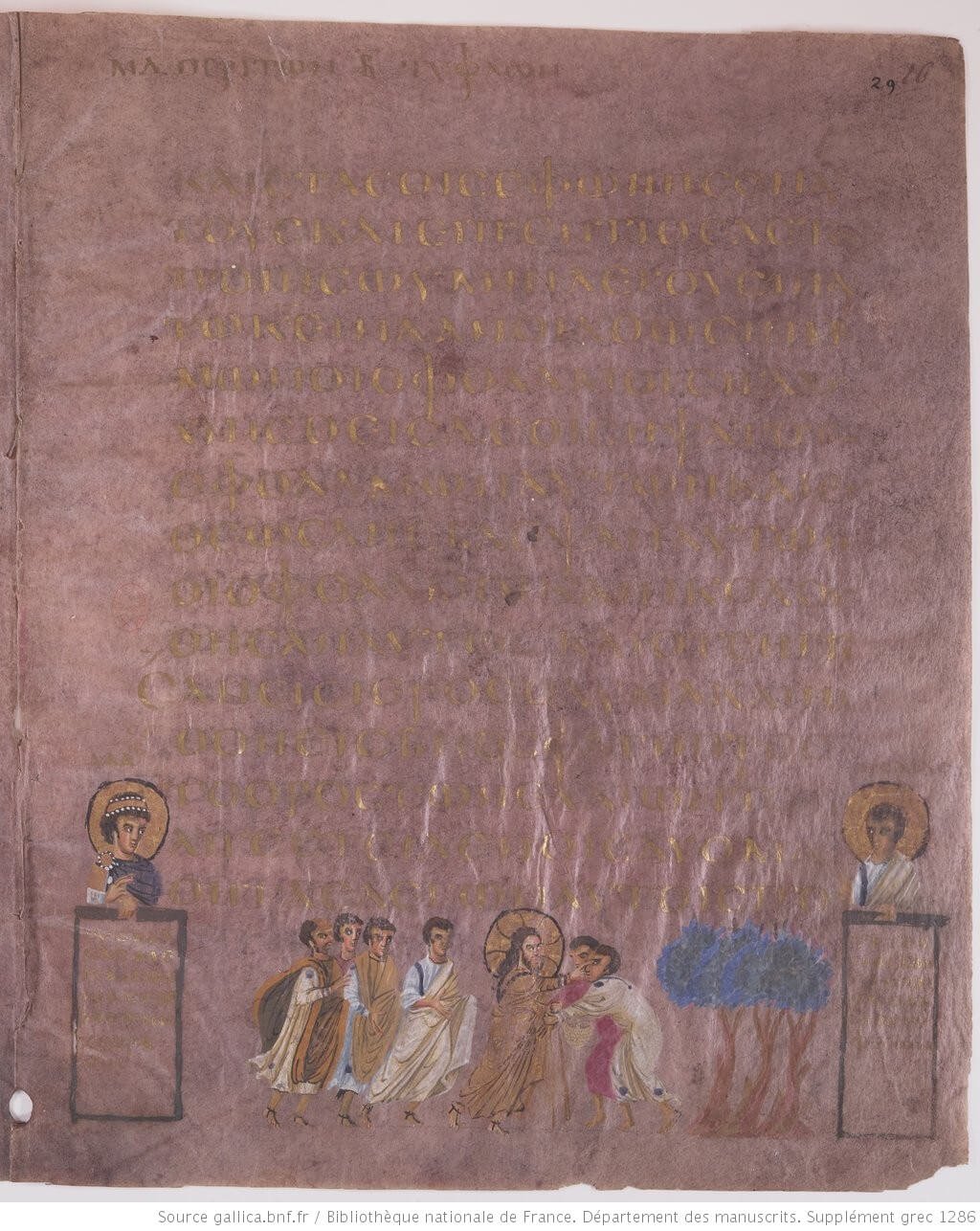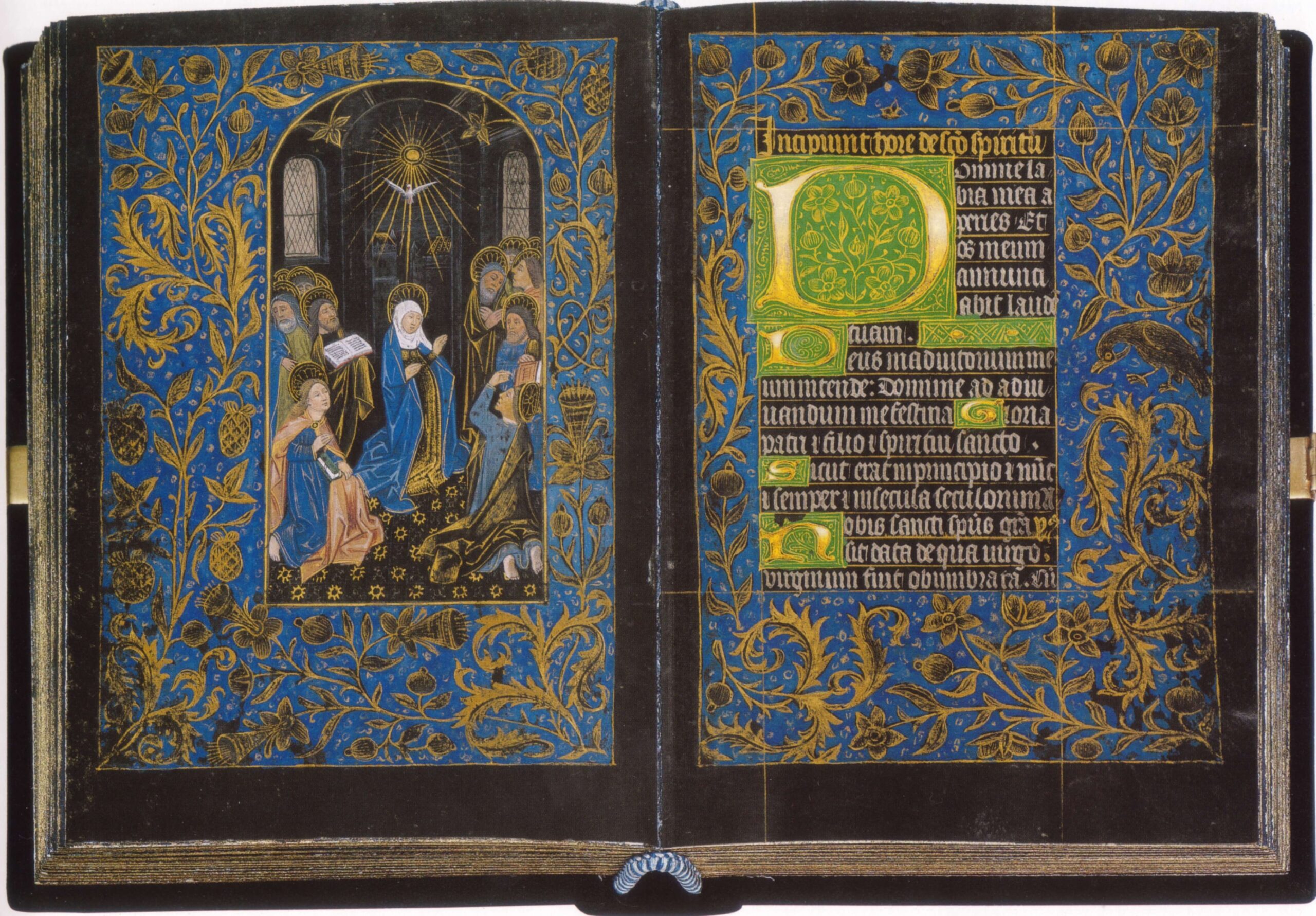Welcome to 31 Days of Medieval Manuscripts, a month-long series introducing the fascinating and brilliant world of medieval illuminated manuscripts.
Today’s post is about the Morgan Library’s Black Hours (Ms. M.493). It’s a truly stunning manuscript that demonstrates the relatively rare but wonderful phenomenon of manuscripts on colored parchment.

The reason for this manuscript’s name is obvious; it is completely written and illustrated on parchment that has been stained black. The contrast of those dark pages with the generous blue borders, green accents, and gilt decoration is highly effective, though it makes the text is a bit difficult to read. It’s certainly a manuscript that stands out from most others. The museum offers a digital display of every page in the manuscript, so you can enjoy it on your computer screen.
Purple Pages

Manuscripts on black vellum are rare; only a total of three survive.1 It’s much more common – though still not ordinary – to see manuscripts on purple parchment. There’s even a fancy Latin word for this – codex purpureus. These manuscripts, like the color purple more broadly, are generally associated with Emperors, especially Byzantine Emperors and early Medieval European Emperors like Charlemagne. However, due to natural aging, these manuscripts don’t necessarily look as much purple as red anymore. Purple codices tend to date from the earlier part of the Middle Ages.
Medieval European manuscripts are generally written on animal skin, called parchment or vellum, not on paper. Parchment is naturally a creamy or light tan color but can be made to take on deep colors like black, purple, and blue. The color is dyed into the entire parchment rather than simply being painted onto its surface like the text and illustrations. As you can imagine, this is an difficult and expensive process, so dyed parchment is a mark of great luxury and wealth, and patrons able to use it were typically of the very highest status.

These manuscripts usually have lots of gold and silver leaf on them, partly because they are meant to be luxurious and partly because metallics show up better against colored backgrounds than the usual selection of pigments would. Even the text would often be written in gold or silver ink. Unfortunately, since silver tarnishes over time, these manuscripts now have lots of dark patches that were once really shiny. A few, however, have somehow escaped this and still look gorgeous.
- Scorcioni, Giovanni. “10 Beautiful Medieval Manuscripts“. Medievalists.net. Accessed October 3, 2023. ↩︎
Expert guidance for your next art museum adventure



